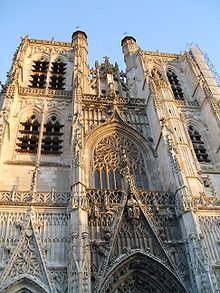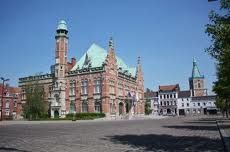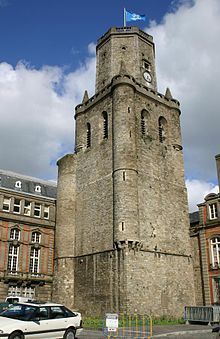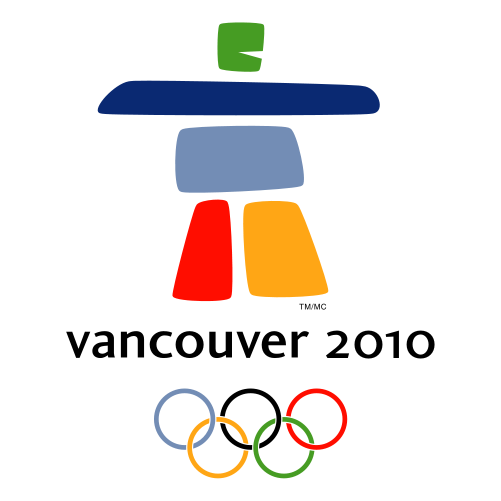The Tour de France 2012, the world’s premier cycling event kicked off last Saturday with the Prologue in Liège, Belgium and will conclude on July 22 with the traditional ride into Paris and laps up and down the Champs-Élysées. Over the next 22 days the race will take its course briefly along the Northwestern coast of France through Boulogne-sur-Mer, Abbeville and into Rouen then into the mountains of the Jura, Swiss Alps and the Pyrenees.
We will be Live Blogging Le Tour 2012 every morning at The Stars Hollow Gazette starting at 7:30 AM EDT. Come join us for a morning chat, cheer the riders and watch some of the most beautiful and historic countryside in Europe.

La Plage de l’Hôtel de Ville
Stage 5 began where it ended in Stage 4, Rouen and continued over mostly flat terrain for 196.5 km to Saint-Quentin, a commune in the Aisne department in Picardy in northern France. It is named after Saint Quentin, who is said to have been martyred here in the 3rd century.
The city was founded by the Romans, in the Augustean period, to replace the oppidum of Vermand (11 km away) as the capital of Viromandui (Celtic Belgian people who occupied the region). It received the name of Augusta Viromanduorum, Augusta of the Viromandui, in honor of the Emperor Augustus. The site is that of a ford across the River Somme. During the late Roman period, it is possible that the civitas capital was transferred back to Vermand (whose name comes from Veromandis); almost nothing relating to the 4th century has been found in Saint-Quentin.
During the early Middle Ages, a major monastery developed, based on pilgrimage to the tomb of Quentin, a Roman Christian who came to evangelize the region and was martyred in Augusta, giving rise to a new town which was named after him.
From the 9th century, Saint-Quentin was the capital of Vermandois County. From the 10th century, the counts of Vermandois (descendants of the Carolingian, then Capetian families) were very powerful. The city grew rapidly: the “bourgeois” organized themselves and obtained, in the second half of the 11th century (a very early date), a municipal charter which guaranteed their commune a large degree of autonomy.
At the beginning of the 13th century, Saint-Quentin entered the royal domain. At that time, it was a thriving city, based on its wool textile industry (city “drapante”). It was also a centre of commerce boosted by its position on the border of the kingdom of France, between the Champagne fairs and the cities of Flanders (wine exportation, etc.): it had an important annual fair. It also benefited from its location in the heart of a rich agricultural region (trade of grain and “guède”, woad, a high-value blue colouring pigment). to have been martyred here in the 3rd century. [..]
The First World War hit St Quentin very hard. In September 1914, the city was over-run, and it endured a harsh occupation. From 1916, it lay at the heart of the war zone, because the Germans had integrated it into the Hindenburg Line. After the evacuation of the population in March, the town was systematically looted and industrial equipment removed or destroyed. The fighting destroyed it: 80% of buildings (including the Basilica) were damaged.
Despite national support, the reconstruction process was long, and the city struggled to regain its pre-1914 dynamism. The 1911 population of 55,000 was achieved again only in the mid-1950s, in the context of general economic expansion. This prosperity continued until mid-1970s, when the French textile industry began to suffer through competition from developing countries.

 Abbeville first appears in history during the ninth century. At that time belonging to the abbey of Saint-Riquier, it was afterwards governed by the Counts of Ponthieu. Together with that county, it came into the possession of the Alençon and other French families, and afterwards into that of the House of Castile, from whom by marriage it fell in 1272 to King Edward I of England. French and English were its masters by turns till 1435 when, by the treaty of Arras, it was ceded to the Duke of Burgundy. In 1477 it was annexed by King Louis XI of France, and was held by two illegitimate branches of the royal family in the 16th and 17th centuries, being in 1696 reunited to the crown. In 1514, the town saw the marriage of Louis XII of France to Mary Tudor, the daughter of Henry VII of England.
Abbeville first appears in history during the ninth century. At that time belonging to the abbey of Saint-Riquier, it was afterwards governed by the Counts of Ponthieu. Together with that county, it came into the possession of the Alençon and other French families, and afterwards into that of the House of Castile, from whom by marriage it fell in 1272 to King Edward I of England. French and English were its masters by turns till 1435 when, by the treaty of Arras, it was ceded to the Duke of Burgundy. In 1477 it was annexed by King Louis XI of France, and was held by two illegitimate branches of the royal family in the 16th and 17th centuries, being in 1696 reunited to the crown. In 1514, the town saw the marriage of Louis XII of France to Mary Tudor, the daughter of Henry VII of England. Then it is on the the finish in the historic capital city of Normandy,
Then it is on the the finish in the historic capital city of Normandy,  Rouen is known for its Notre Dame cathedral, with its Tour de Beurre (butter tower). The cathedral was the subject of a series of paintings by Claude Monet, some of which are exhibited in the Musée d’Orsay in Paris. It contains a tomb of Richard the Lionheart which contained his heart. His bowels were probably buried within the church of the Chateau of Châlus-Chabrol in the Limousin. It was from the walls of the Chateau of Châlus-Chabrol that the crossbow bolt was fired, which led to his death once the wound became septic. His corporeal remains were buried next to his father at Fontevraud Abbey near Chinon and Saumur, France. Richard’s effigy is on top of the tomb, and his name is inscribed in Latin on the side.
Rouen is known for its Notre Dame cathedral, with its Tour de Beurre (butter tower). The cathedral was the subject of a series of paintings by Claude Monet, some of which are exhibited in the Musée d’Orsay in Paris. It contains a tomb of Richard the Lionheart which contained his heart. His bowels were probably buried within the church of the Chateau of Châlus-Chabrol in the Limousin. It was from the walls of the Chateau of Châlus-Chabrol that the crossbow bolt was fired, which led to his death once the wound became septic. His corporeal remains were buried next to his father at Fontevraud Abbey near Chinon and Saumur, France. Richard’s effigy is on top of the tomb, and his name is inscribed in Latin on the side. Stage 3 on Tuesday started in
Stage 3 on Tuesday started in  In the 19th century the Cathedral of Notre-Dame was reconstructed by the priest Benoit Haffreingue after he received a call from God to reconstruct the town’s ruined basilica. During the Napoleonic Wars, Napoleon amassed La Grande Armée in Boulogne to invade the United Kingdom in 1805. However, his plans were halted by other European matters and the supremacy of the Royal Navy (including thousands of Congreve rockets)
In the 19th century the Cathedral of Notre-Dame was reconstructed by the priest Benoit Haffreingue after he received a call from God to reconstruct the town’s ruined basilica. During the Napoleonic Wars, Napoleon amassed La Grande Armée in Boulogne to invade the United Kingdom in 1805. However, his plans were halted by other European matters and the supremacy of the Royal Navy (including thousands of Congreve rockets)




